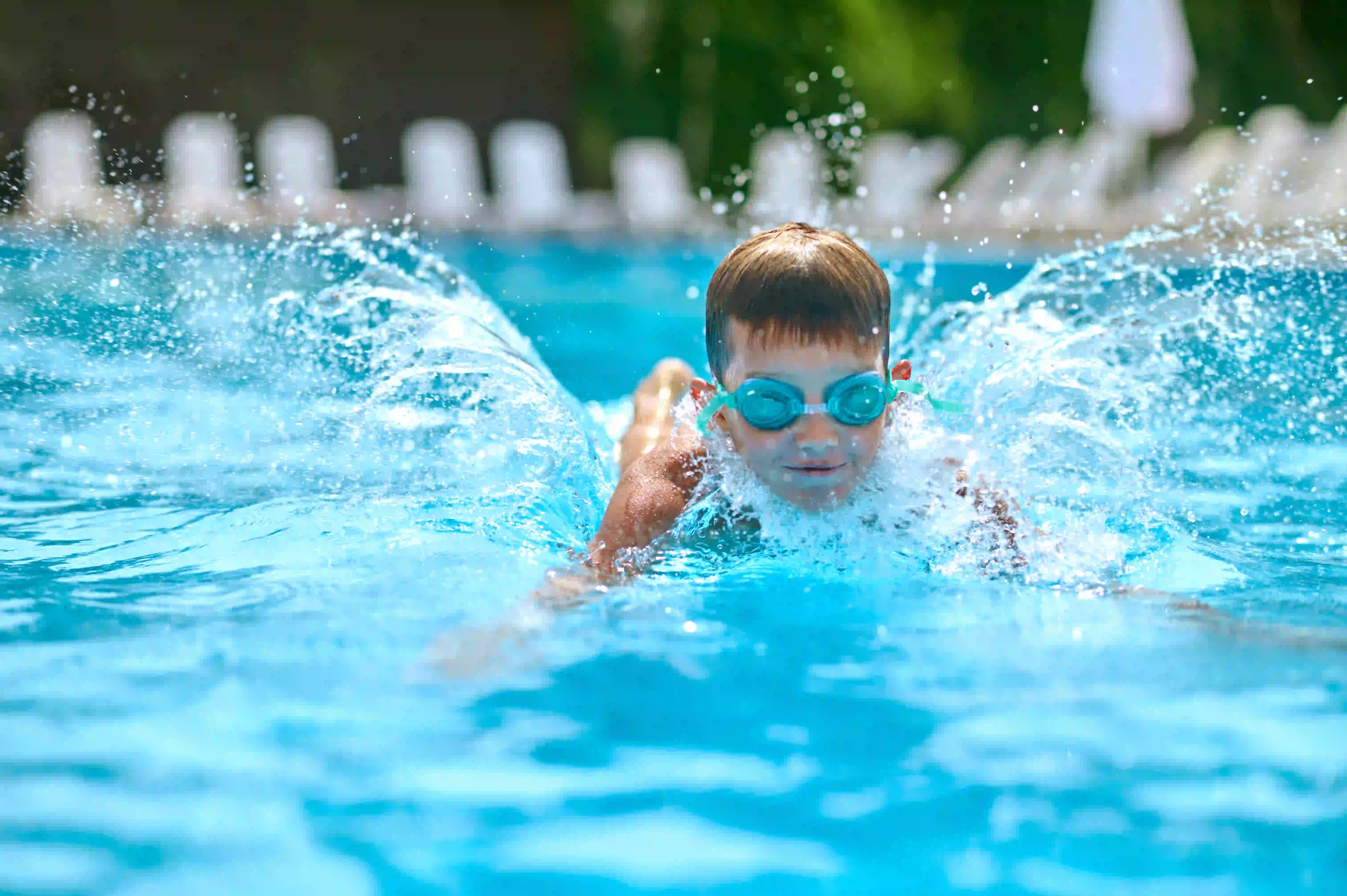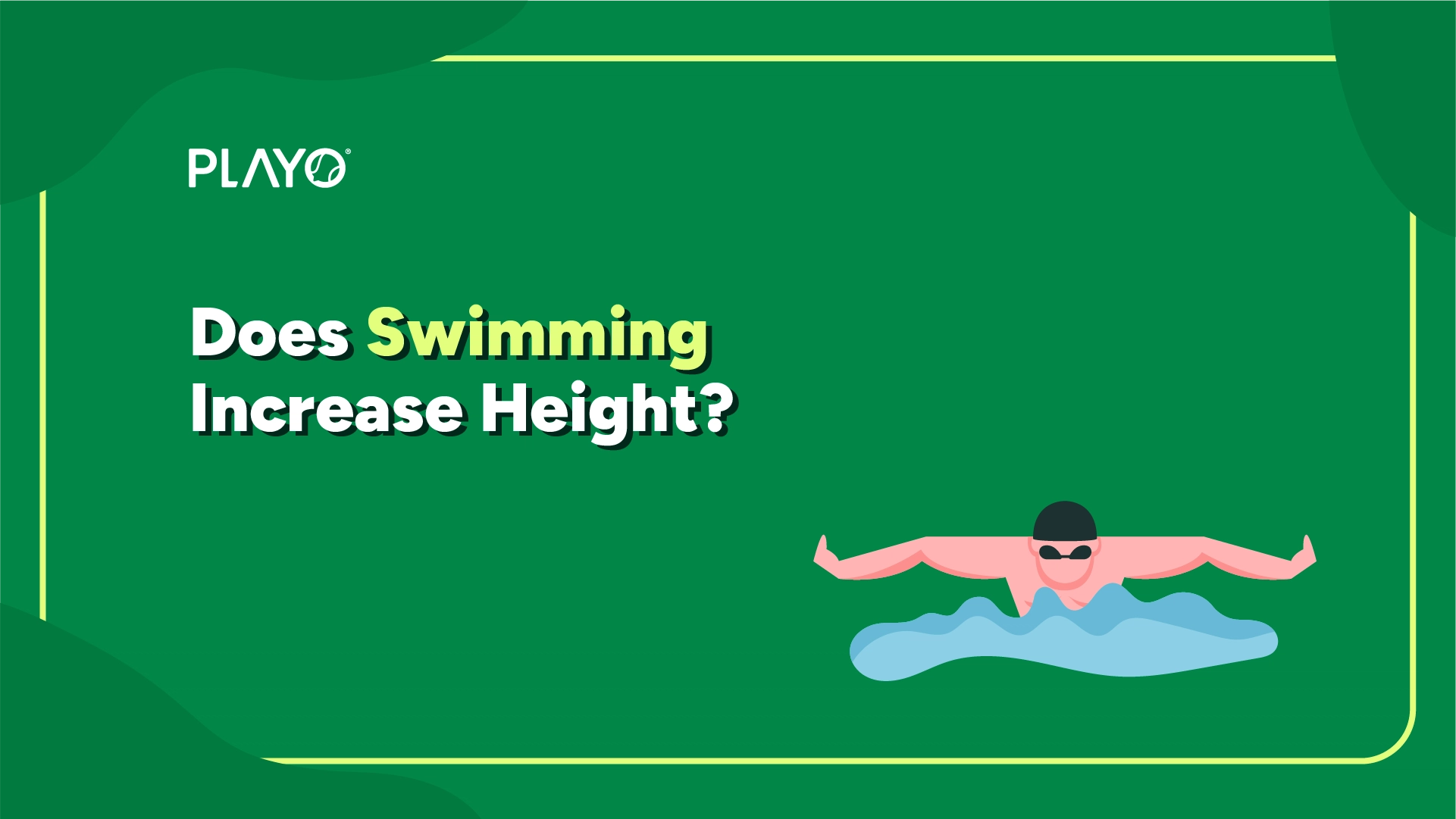You would have probably heard someone say, “Swim every day, and you’ll grow taller!” But the truth is, no, swimming cannot actually increase your height once your growth plates have closed, which usually happens between ages 18 and 21.
However, during your growing years, swimming can indirectly help support height development by improving posture, flexibility, and overall body strength. In other words, while it won’t make your bones longer, it can help you look and stand taller.
In this blog, we’ll dive into the science behind height, bust some common myths, and answer key questions like “Does swimming increase height after 18?” and “Does swimming help increase height?” to reveal what swimming truly does (and doesn’t) do for your height.
The Science of Height: What Really Determines How Tall You Get?
Height isn’t something you can “train” like a muscle. It’s primarily dictated by genetics, which accounts for about 80% of your final stature. The remaining 20% depends on nutrition, hormones, and overall health, especially during childhood and adolescence.
Key determinants of height:
- Genetics: Your genes dictate maximum height potential, determining when and how your growth plates function during puberty.
- Growth plates: These are cartilage zones near the ends of long bones. They remain open during childhood and adolescence, allowing bones to lengthen. However, the plates close between the ages of 16–21, stopping further height increase.
- Growth hormone (HGH): Naturally released during deep sleep and intense exercise, it plays a vital role in tissue growth and cell repair.
- Nutrition and general health: A diet rich in calcium, vitamin D, and protein supports strong bone density and growth during early years.
Read More: Can Swimming Lose Weight
Does Swimming Increase Height: Myth vs Reality
Some sources suggest that swimming stretches the body enough to elongate bones. However, scientific consensus contradicts this. While swimming can decompress the spine and improve body posture temporarily, it does not cause permanent skeletal growth.
The Reality: Temporary Height and Better Posture
When you swim, the spine decompresses because water reduces gravitational load by up to 90%. This decompression can lead to a temporary increase in height, often 1–2 centimetres, right after swimming. But as soon as you stand on land for a while, your spine compresses back to normal.
The more lasting benefit comes from improved posture. Swimming builds core, back, and shoulder muscles, helping you stand erect and appear taller even if your actual height hasn’t changed.
Can Swimming Help Increase Height in Children and Teens?
The developing years are the best time to support natural growth, and swimming contributes positively to that growth. Studies suggest that introducing swimming between the ages of 1 and 12 promotes physical strength, healthy bone density, and flexibility.

When children regularly engage in swimming, they experience:
- Better posture and spinal alignment
- Enhanced muscle-bone coordination
- Higher levels of growth hormone due to active exercise
- Balanced overall development through a full-body workout
So, does swimming help increase height? The answer is yes, indirectly during growth years. Swim training won’t override genetics, but it helps children reach their maximum height potential. For teens undergoing puberty, swimming also supports joint flexibility, promotes proper bone development, and helps maintain a healthy weight, all of which are essential for optimal growth.
Does Swimming Increase Height After 18?
No, swimming cannot increase your height after 18. Once the growth plates in your femur, tibia, and spine fuse, usually between ages 18 and 21, bone lengthening stops permanently. After that, no exercise, diet, or supplement can add measurable height.
However, swimming after 18 offers several benefits that are often mistaken for height increase. It helps decompress the spine, which might make you feel slightly taller temporarily. It also improves posture by strengthening the back, shoulders, and core, making you stand more upright.
Additionally, the water resistance in swimming tones and balances your muscles, improving overall body proportion. As studies show, exercises like swimming no longer affect bone length after the growth phase, but they do greatly enhance body alignment and self-confidence.
Therefore, swimming does not increase height after 18, but swimming can still make you look taller by improving your posture and flexibility.
How Different Swimming Strokes Affect Your Posture and Appearance
Each swimming stroke affects your posture, spine, and muscle balance differently. While swimming can’t increase bone length, it can enhance flexibility and make you appear taller.
| Swimming Stroke | Body Areas Engaged | Impact on Posture & Spine |
| Freestyle (Front Crawl) | Full body – especially shoulders, core, back | Promotes elongated body line; strengthens spine and abs |
| Backstroke | Upper back, core, legs | Improves spinal alignment; opens chest and shoulders |
| Breaststroke | Chest, thighs, neck | Builds posture stability; limited stretch effect |
| Butterfly | Shoulders, arms, core, hips | Strengthens the upper body but compresses the spine slightly under strain |
| Sidestroke / Leisure Stroke | Core and obliques | Gentle spinal stretch, mild posture correction |
Lifestyle Factors That Actually Support Height Growth
For those still within their growth phase, combining swimming with proper lifestyle habits maximises growth potential. For adults, these factors help maintain bone health and strong posture.
- Balanced diet: Include foods rich in protein, calcium, vitamin D, zinc, and magnesium. Dairy, fish, eggs, soy products, and leafy greens support robust bone development.
- Adequate sleep: The body secretes growth hormone mainly during deep sleep cycles. For teenagers, 8–10 hours of rest is vital.
- Exercise variety: Combine swimming with weight-bearing activities like skipping, basketball, or running to enhance bone density.
- Healthy habits: Avoid smoking, chronic stress, or nutritional deficiencies, which can stunt natural growth or bone integrity.
By pairing swimming with balanced lifestyle choices during childhood and adolescence, one can reach their highest growth capacity in a healthy and sustainable way.
Conclusion
Swimming doesn’t directly increase height, especially after the age of 18. The popular belief that swimming can elongate bones lacks scientific backing. What swimming truly offers is a posture advantage, improved flexibility, and a lean, elongated appearance.
So, the correct interpretation is, swimming can help you reach your potential height if you are still growing, and help you look taller through better posture and body alignment if you are an adult. Whether for kids or adults, the benefits of swimming go far beyond height; it builds endurance, cardiovascular strength, and a confident, upright posture that enhances presence.
Download Playo on Android or iOS, or visit playo.co to start playing!
Frequently Asked Questions
No. After 18, your bone growth plates have typically fused, making it impossible to increase height. Swimming can improve posture and spinal decompression, but not actual bone length.
During childhood and puberty, swimming may support natural growth by strengthening muscles and stimulating the release of growth hormone. For adults, it doesn’t increase height but enhances overall body alignment.
Yes, indirectly. Swimming supports growth potential during puberty when growth plates remain open. Consistent physical activity combined with proper nutrition can help maximise height.
Those with contagious skin conditions, open wounds, severe ear infections, or uncontrolled respiratory conditions should consult a doctor before swimming.
For general fitness, 20–30 laps (at least 30–45 minutes) of moderate swimming, 3–4 times per week, provides excellent physical benefits.
Avoid skipping a shower, neglecting rehydration, or consuming heavy meals immediately after swimming. Stretch lightly to prevent muscle stiffness.





0 Comments